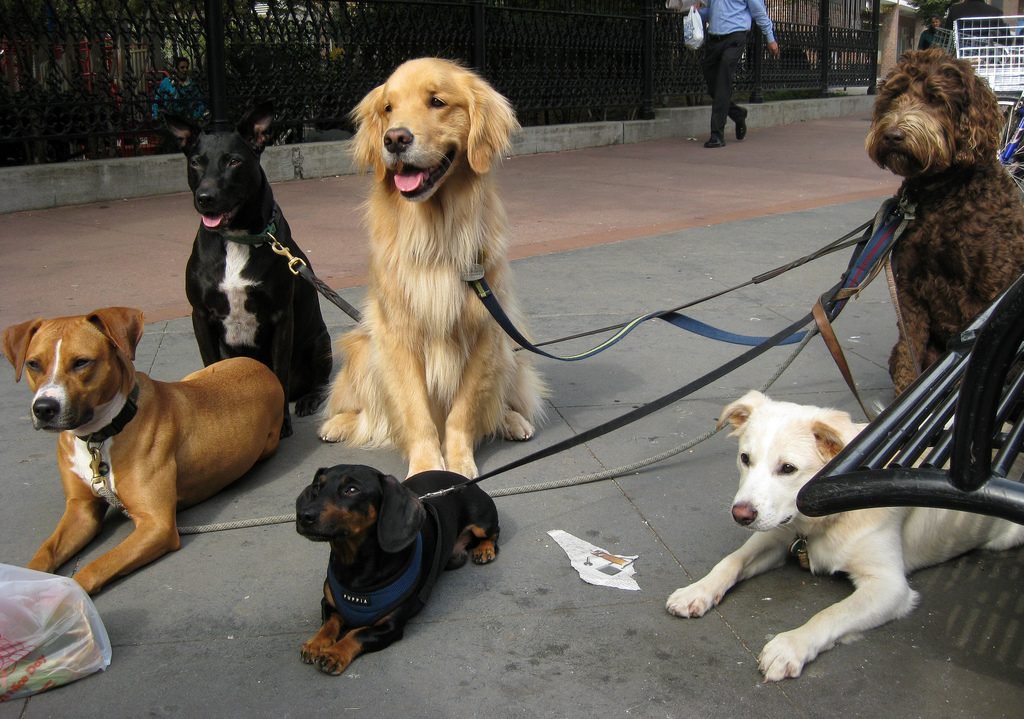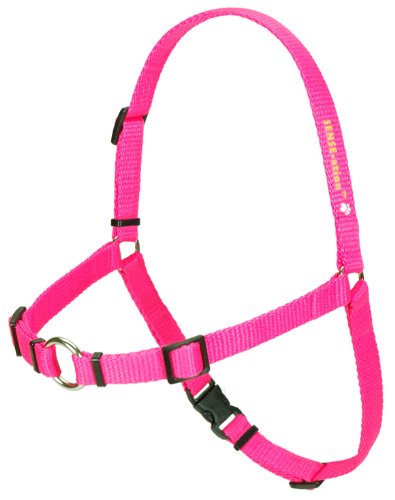[ad_1]
Improving your canine’s leash talents is ready the use of brains, now not brawn. There are a lot of gadgets available in the market—prong collars and choke collars amongst them—that declare to proper your canine’s pulling on leash. Unfortunately, whilst they’re helpful, they’re additionally unhealthy.
There is a greater means!
Choose the appropriate apparatus
What if I advised you there may be apparatus to be had that can lend a hand your canine to stroll extra well on leash with out inflicting them ache?
Well, bet what? You’re in good fortune. There are two varieties of harnesses that may now not handiest lend a hand reinforce your canine’s strolling talents however, when used appropriately, they’re mild and pain-free.
The anti-pull harness
This taste harness—which is available in quite a few manufacturers together with Senseation, MarvelWalker, and Easy Walk—attaches to a leash on the entrance of the chest, now not on the backbone.
Putting the leash in entrance of the canine offers you a form of energy steerage, during which in case your canine pulls forward at the leash, they really feel stress that tries to flip them in a single path or every other. Since your canine doesn’t need to flip, he’ll decelerate to proceed shifting instantly forward and voilà: not more pulling.
At least, that’s the way it’s intended to paintings. On a big share of canines, the anti-pull harness is tremendously efficient—magical, virtually. But for different canines, whilst nonetheless a better choice than harnesses that clip at the backbone, it gained’t provide you with the type of spice up you had been hoping for.
There are a pair different issues to be mindful concerning the anti-pull harness. First, it’s now not a coaching device, it’s a control device. It works whilst your canine is dressed in the harness, however the canine isn’t studying the rest from it. Second, as a result of the harness’ comfortable are compatible underneath the armpits, it may possibly chafe some canines. This downside is definitely resolved via wrapping that phase of the harness with a comfortable, comfortable subject matter like felt.
The head halter
A head halter, just like the Gentle Leader or Halti, works at the similar theory as a halter used to stroll a 1000-lb. horse: via providing you with keep watch over over essentially the most delicate a part of your canine’s frame. If they pull forward, the stress at the leash reasons their head to flip and, when your canine’s head turns, their complete frame wishes to practice. To keep away from turning, your canine will decelerate and forestall pulling at the leash.
This is a smart choice for canines who want greater than an anti-pull harness. Though they appear just a little alarming, head halters aren’t muzzles—your canine may even elevate a ball whilst dressed in one. But identical to the anti-pull harness, there are a few caveats to take note of.
First, and most significantly, maximum canines don’t similar to issues on their faces. If you buy a head halter and instantly put it for your canine, they’re going to spend the entire stroll making an attempt to take away it. In order to persuade them that the halter is risk free, you’ll want to regularly desensitize your canine to it.
Second, the top halter has the nasty addiction of chafing the nostril of a few canines, growing just a little, uncooked bald spot. Wrapping the nostril band with comfortable subject matter (or purchasing a halter with a cushioned nostril band) can lend a hand save you this.
Both the anti-pull harness and the top halter will have to handiest be worn right through a stroll; take away them out of your canine while you go back house.
Training for an exquisite stroll
Now that you just’ve were given the appropriate apparatus doing one of the vital paintings for you, those coaching workouts will assist you to to set your canine up for long-term strolling luck.

Flickr/Kristine Paulus
Red gentle, inexperienced gentle
WIth this recreation, your canine learns that pulling at the leash actually will get him nowhere. Here’s the way it works:
- When your canine pulls on leash, plant your toes and forestall shifting.
- Either wait for your canine to relax at the leash or use your voice to get them to flip towards you, thus freeing stress at the leash. Do now not use your power to pull your canine again to you.
- When your canine has loosened up at the leash, start shifting once more.
- Repeat any time your canine pulls.
Name recreation
A canine that walks well on leash is a canine this is strolling with their mum or dad, now not being walked via them. When your canine is steadily checking in with you (taking a look again at you) to you’ll want to’re nonetheless in combination, you’ll get started to change into a staff. Begin to construct this addiction with the Name Game.
- While strolling your canine, say their title in a contented tone of voice.
- When your canine appears to be like at you, mark it with the phrase “YES!” and praise your canine with a deal with whilst nonetheless shifting ahead.
- Repeat continuously. Try first doing this 5 occasions each and every block then regularly lower the frequency to 4, 3, two, then one time consistent with block. As you lower the frequency of the Name Game, your canine will have to proceed to steadily glance again at you despite the fact that you haven’t stated their title. Be certain to mark and praise them each and every time they do!
Touch
Hand-targeting (incessantly cued with the phrase “touch”) is some way of having your canine to transfer via area with out pulling at the leash. It’s like hanging a magnet between your hand and your canine’s nostril which reasons them to go back to you after they get started to pull too some distance away. Be certain to educate your canine a cast “touch” prior to making an attempt this workout.
- If your canine begins to flow clear of you or pulls, put out your hand at your facet and ask for a “Touch.”
- When your canine touches their nostril to your hand, mark it with the phrase “YES!” and praise them with a deal with whilst nonetheless shifting ahead.
- Repeat as wanted.
The case in opposition to prong and choke collars
As I discussed in the beginning of the item, collars that purpose ache are prevalent. Here’s just a little extra element about why I don’t consider that they paintings ultimately.
These varieties of apparatus all paintings at the theory of making use of drive and ache to your canine’s neck after they pull at the leash.
Dog pulls → Dog feels ache → Dog slows down and prevents pulling to alleviate the ache.
The downside is this situation is probably not the obvious one out of your canine’s viewpoint. These gadgets can’t distinguish between my canine pulling as a result of he’s keen to rush forward or as a result of he sees every other canine or one who needs to say hi. All my canine is aware of is: pulling reasons ache.
If that ache happens each and every time he sees every other canine or a pleasant human, my canine would possibly consider that it’s their presence inflicting the ache; he doesn’t acknowledge that I’m the only in the back of the leash making him uncomfortable.
Once my canine believes that environmental stimuli are leading to his ache, he’s going to do what he can to save you them from getting shut. To do that, he would possibly bark and lunge, growl, or check out to escape when he sees different canines or other people coming. Here’s a vintage starting place tale for leash reactivity:
Dog pulls towards frien to say hi → Dog feels ache → Dog thinks pal is inflicting him ache → Dog barks and lunges to stay pal away
The worst a part of this coaching misfire is that it’s now not even educating my canine to decelerate; it’s educating him, as an alternative, to make a show when he anticipates ache is on its means.
Just keep in mind: there’s a higher means. Consistency, persistence, and calm are key to a well-behaved canine on leash.
Good good fortune!
[ad_2]





